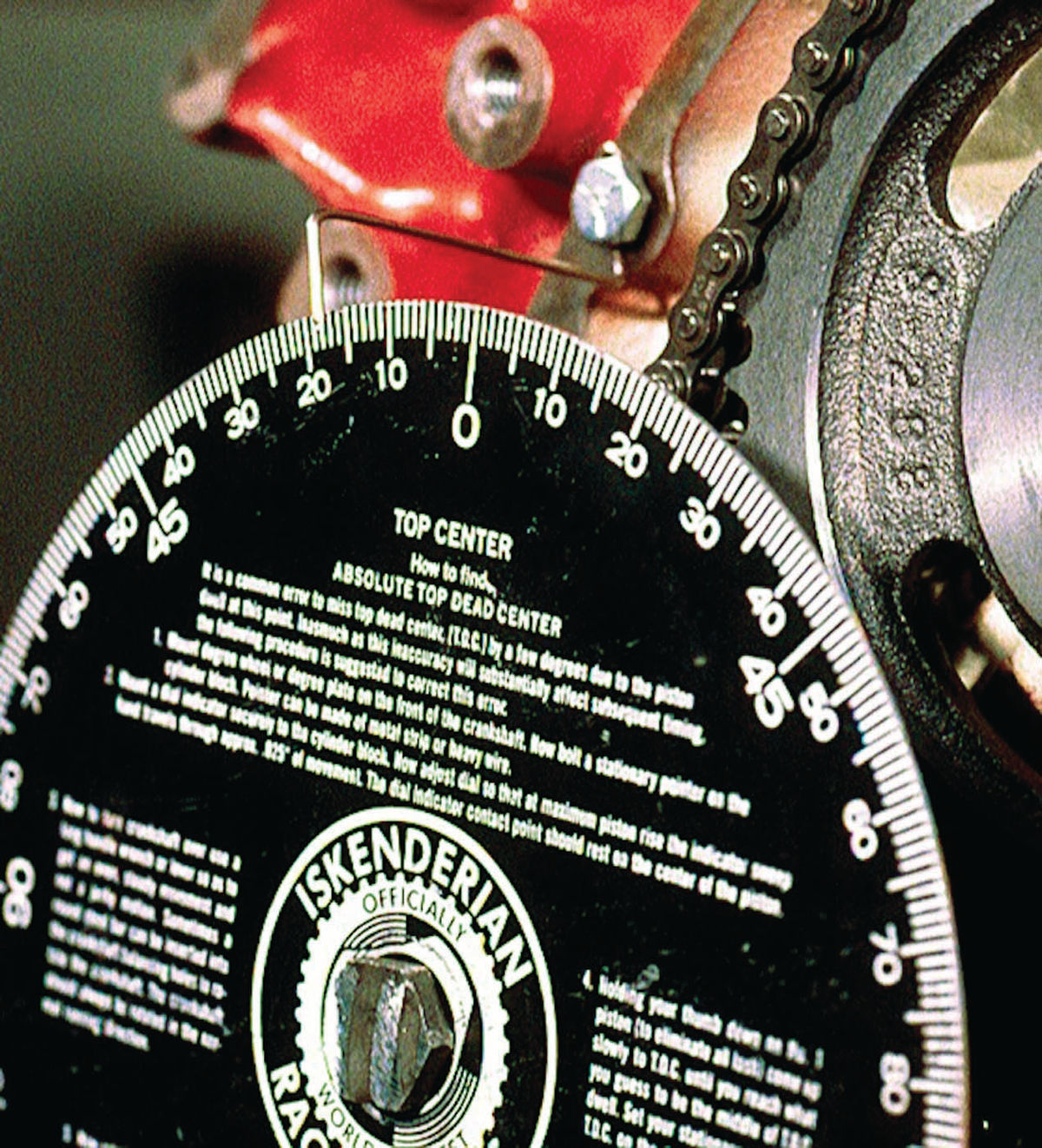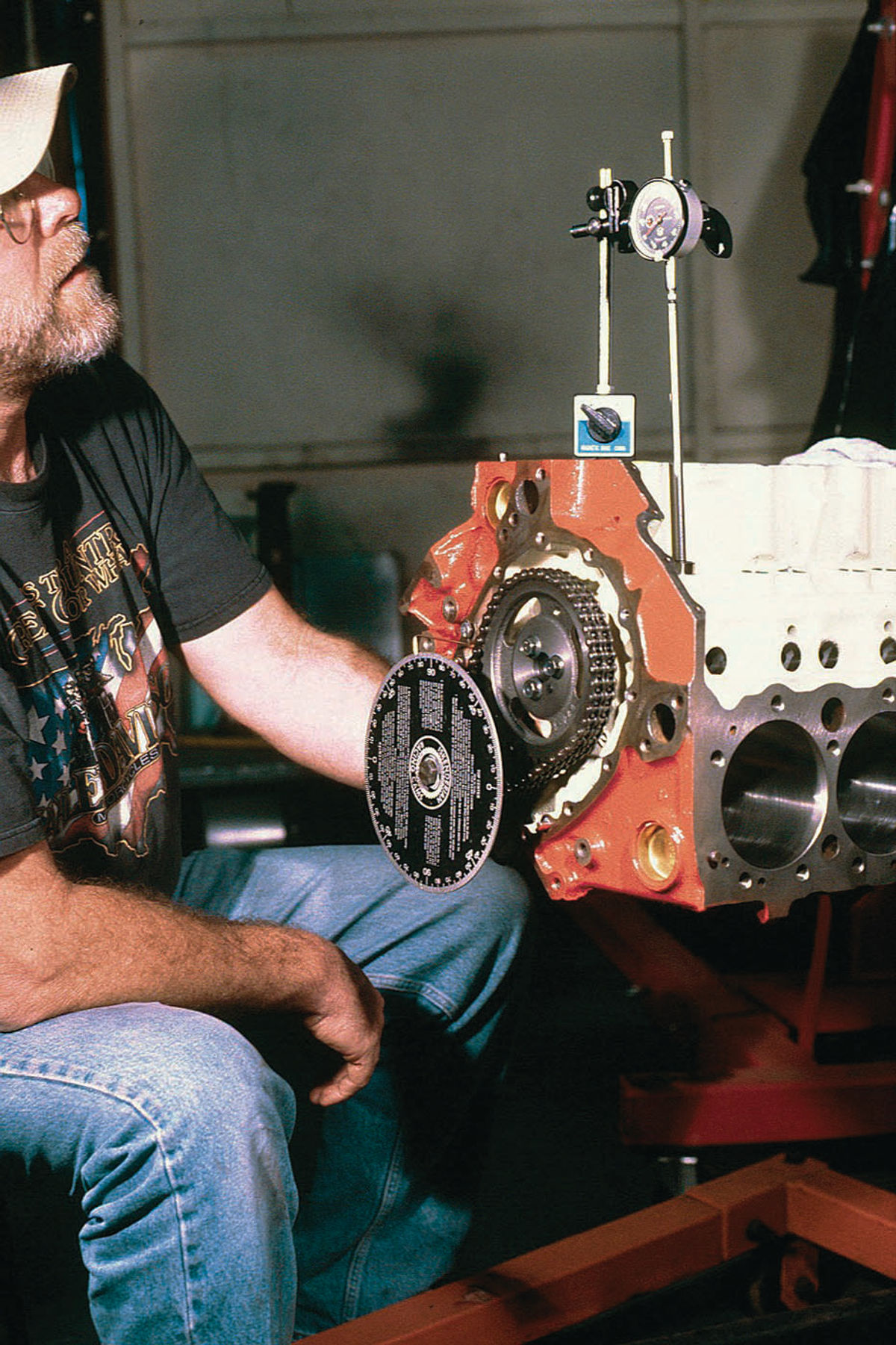I should have degreed my cam
Question:
I have concluded that I have made a big mistake in not degreeing my cam before I finished a Volvo Penta V-8 boat motor overhaul. The motor is, in fact, a Chevrolet 305. The second mistake was hot-rodding the engine as if it were a car motor. I installed a mild cam, a multi-button cam sprocket, roller rockers, and bored it 20 over.
The engine starts and idles easily. The epiphany came following some research about boat motors. I have done numerous car motors but knew little of boat motors. As you know a boat motor must make torque at low rpm and be able to run all day on the water at higher rpm without problems.
Fortunately, I never installed the motor and it sits on a stand in my shop today.
First, I assembled the engine without even looking at the cam card that came with the new cam. I simply went TDC and then selected a cam sprocket dowel and stuck it in the hole that lined up. I have no memory of where I bought the cam or what company made it. I have built this engine as if it would be driven on the road with a transmission behind it. Hindsight is always 20/20.
Finally, how do I determine the lobe and duration on the cam w/o the cam card? Should I just find a second rebuildable 305 and start over or should I install the one I have and see what happens? Installing it seems out of the question since I know it won’t hold up to an all-day run out at sea. I really don’t relish the idea being stranded at sea without power.
If I start over I will have to use another 305 truck engine since all the ancillary marine specific parts would be useable. However, this time, I will follow the Volvo rebuild manual. Any suggestions on your end would be greatly appreciated.
Answer:
Determining the lift and duration of the cam in your 305 will require a cam degree wheel to mount on the cam gear, a stop or dial gauge for the piston to determine top-deadcenter, and a magnetic base and dial gauge. The dial gauge will tell you the lift of the intake and exhaust valves, and combining it with the degree wheel will tell you the duration. But the chances of your having a good cam for boat use with your drive system are very unlikely if you installed an automotive cam.


If the engine is completely assembled, you would need to remove the intake manifold so you can see the cam, as well as the front timing gear cover and one head, to measure the duration and lift of the cam. But it is highly unlikely that the cam in your engine is going to be suitable for your purposes. Advancing and retarding the cam might make the engine work a little better for your needs depending on what you discover, but it is doubtful. Automotive and boat cams are different animals.
Generally for boat use people use a dual pattern cam with 112 degrees between lobe centers, but not knowing the size of your boat or whether you want to go racing or fishing, I would not even try to recommend a cam for your purposes. However I don’t see why you would have to start over with another block. It would seem that you could make the necessary changes to the one you have without too much drama. To determine the best cam for your purposes contact:
Ed Iskandarian Racing cams16020 S. Broadway Gardena, CA 90248 iskycams.com
Isk and arian pretty much invented high-performance cams in the 1940s, and has been producing specialty cams since the beginning of the hot rod culture. I have used Isky cams for many years and have found them to be outstanding. Call them up and have a talk with Richard or Ron, and tell them what size boat you have, what you plan to do with it, and about the Volvo drive you will be using.















